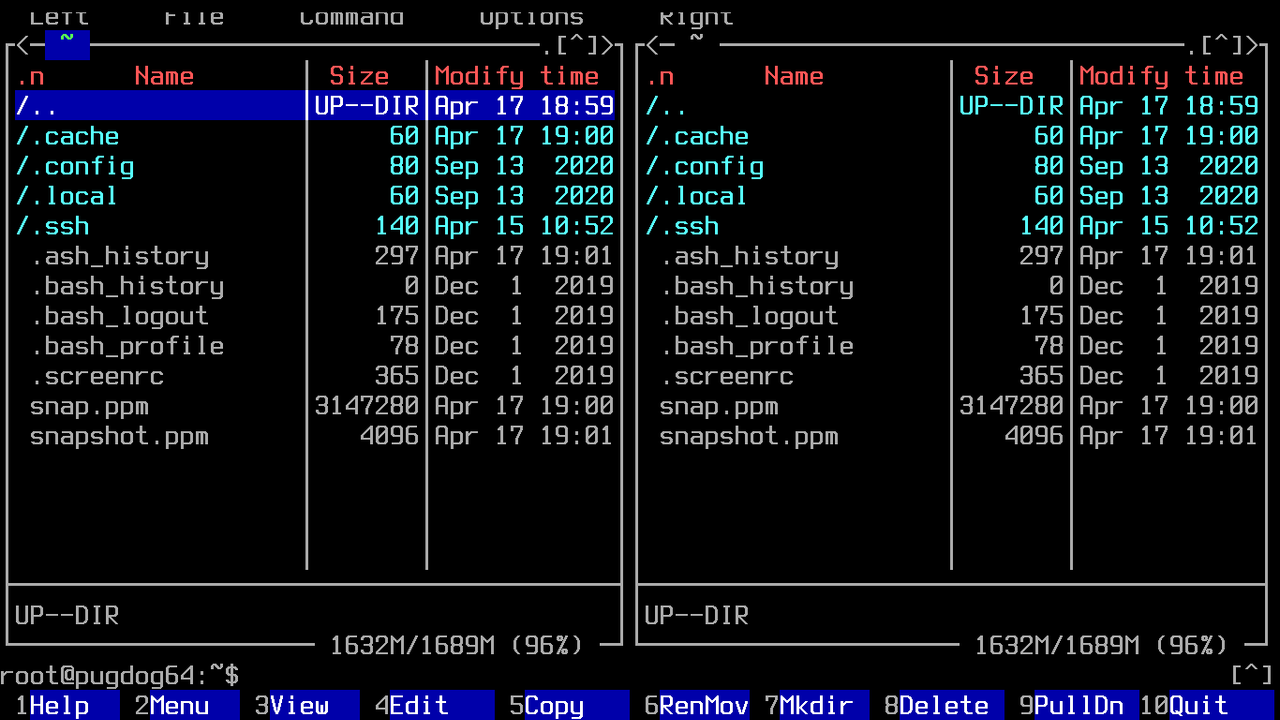NOTE: This topic has been transferred to "Getting Started and System Requirements" at the top of the forum.
Renamed as: Using the Terminal
You may still leave comments and suggestions here.
Here's the 21st topic in the Helping new users series
Thanks
wizard
********************************Draft220416 ************************
This topic assumes you are using one of the recommended distros or remasters.
Puppy Linux does an excellent job of providing the user with graphical (GUI) applications and under ordinary operations you will not need to use the terminal. If, however, you have problems and/or ask for help on the forum you may be asked to open the terminal program to help troubleshoot. The sequence is then:
1. type a command
2. press: enter
3. see the output
The terminal in Linux is also sometimes refereed to as the “shell” or “command line interface” (cli). Linux terminal programs are like the MS Windows Command Prompt or cmd. When opened it is a blank black or white window with a (blinking) cursor where you can type commands and see output.
Important: all information entered in the terminal is case sensitive.
There are different terminal programs available in Linux. The two we will discuss are LXTerminal and Urxvt. To open either one:
-click Menu>Utility>Urxvt (or LXTerminal)
Sometimes when using the terminal you have to enter long strings of commands and characters. Using copy and paste whenever possible is the best way to avoid errors.
Selecting (highlighting) text to copy:
-With mouse, hold down the left mouse button and drag the mouse across the text.
-With keyboard, hold down the ctrl key and use the arrow keys to move the cursor over the text.
A Word About Hotkeys
Hotkeys are key sequences that execute an action. Example: if the hotkeys to copy some text are: ctrl c, you select the text, hold down the ctrl key and press the c key. This action copies the text into an area called the “clipboard” . Here are some common hotkeys for copying and pasting that work in just about any application where text can be selected (highlighted using the mouse or keyboard):
ctrl c = copies selected text to the clipboard
ctrl v = paste the contents of the clipboard to the current cursor position
Using these hotkeys you can copy text from forum post to paste it into a terminal, or do the reverse. Unfortunately, the terminal programs don’t honor the “standard” hotkeys above.
Here’s how to do copy and paste into/out of the terminal programs:
LXTerminal
-To copy text, select the text and use Edit>Copy
-To paste text, place the cursor where you want to paste and use Edit>Paste
Urxvt
-To copy text, just select it, it is automatically put in the clipboard.
-To paste text, place the cursor where you want to paste and press hotkeys:
ctrl alt v (hold down ctrl alt, press v).
Helpful Hints
When you enter a command in the terminal, it keeps a record of it. You can recall the command by pressing the up/down arrow keys. You can also edit a recalled command without retyping it. The recall is available even after rebooting. This can save you a lot of typing.
Need more help? Join the forum and post your questions in Beginners Help.
